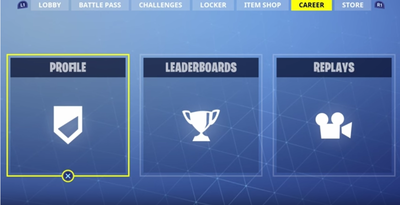E-Learning

Game Insights: Fortnite
The craze that is Fortnite: Battle Royale has hit an all-time high during recent months. Released in September 2017, its frenzy and popularity has many parents asking plenty of questions. With school holidays it was the perfect fortnight to immerse ourselves in the game Fortnite and learn as much as we could. This blog entry will answer the 3 most common questions, the Cyber Safety Project is being asked by parents about Fortnite and provide some easy to implement tips within your household.
Is there a difference between Fortnite and Fortnite: Battle Royale?
Yes, yes there is! Fortnite is a solo version called Save the World and the massively popular multiplayer version is called Fortnite: Battle Royale. If your kids are asking to play “Fortnite” they’re most likely wanting to play Fortnite: Battle Royale version.
The quick summary is that Fortnite: Battle Royale sees up to 100 people participate in a single match together. Players parachute from a party bus onto an island, where they must collect weapons, build structures; all while trying to avoid being killed by other players. While this is going on, a randomly chosen safe zone and moving storm reduces the playing areas within the island and keeps the game moving. All this takes place so that players can ultimately be the last one standing and have “#1 Victory Royale” plastered across the players screen
Players then quickly reset another match, parachute out of the Party Bus and do it all again and again and again.
Why is my child so interested in playing Fortnite and is it appropriate?
There are many reasons why Fortnite has taken off with children. One is that it combines two extremely popular genres that young children have enjoyed in past – building and survival.
Fortnite allows users to play with friends in Duos and Squads, creating a more social element. Children love the fact that they play with their friends! There are also opportunities to view and watch others playing the game (friends, celebrities, top players) on secondary platforms such as Twitch and YouTube. This again proves challenging with increased screen time in doing so.
For some parents, the cartoonish style of game play and bloodless action within Fortnite and Fortnite: Battle Royale makes the violence seem less problematic; yet there is consistent, encouraged and regular violence throughout every game.
Fortnite: Battle Royale does include live, unfiltered chat between users in the console and PC versions. The voice chat and on-screen text chat are options. Given the average age of a Fortnite: Battle Royale users are men between the age of 18 – 24 years old male, unfortunately this means that users are likely to be exposed to profanity as well as people that they don’t know.
The chat feature can be switched off and is certainly encouraged, if your child is playing collaboratively. In answering whether Fortnite is appropriate it’s important to look at the emotions that are experienced within the game itself.
Children playing Fortnite can become easily frustrated and emotional following consistent failures within consecutive matches. These reactions and management of emotions for younger children derive from desire to do well and win. How a child reacts to a loss or even a win; its importance is often a great indicator to parents to whether the game is suitable or not. Monitoring your child’s ability to ‘switch off’ to do other activities and self-regulate themselves and their emotions should always be a priority while they engage in any digital game or device use.
How can I manage screen time for my children when they’re playing Fortnite?
One of the most common concerns that parents raise with us is how to effectively manage screen time within the home. There are some easy measures that can be taken to monitor and manage screen time for children (and adults) playing Fortnite.When playing Fortnite: Battle Royale, one match can very quickly turn into 15 without limits being put in place. Games usually last around 20 minutes and the quick-fire nature of game play provides an obvious stopping point to ‘switch off’ at the end of a match. However, children that find it difficult to self-regulate get trapped in the cycle of saying “just one more game”.As a parent, monitoring how many games your child has played can be viewed within the ‘LOBBY’ section. From there you will need to navigate to the users (see image below). This sections details games played and even the total playing time of individual users. This section is great way to set explicit limits around certain number of matches per day.The images below show you how to find see total matches played and time spent playing.
Top 3 tips for parents whose children are playing Fortnite: Battle Royale are:
- Set limits and monitor how many matches are being played. Use the information available to you to monitor the amounts of games and total time played. Encourage your child to show independence in ‘switching off’ themselves.
- Promote transparency through always ensuring children play in an area of the home where you as a parent can see the screen.
- Discuss associated emotions with your child and ask them how the game play makes them feel. Use the game as an opportunity for your child to learn to regulate their emotions appropriately and practice strategies to manage anger or disappointment after a loss.
From The Cyber Safety Project Blog
Wil Marks
E-Learning Leader



